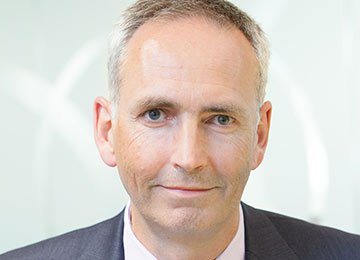
Five key points about Zurich’s underwriting philosophy
Understanding an insurer’s underwriting philosophy can pay dividends for advisers applying for protection for their clients. Financial journalist Jennifer Hill talks to Nicky Bray, chief underwriter at Zurich, to distil its underwriting philosophy into five key points.
We are passionate about making the process of providing an underwriting decision as easy and straightforward as possible and we work alongside our medical exam suppliers, technology partners such as iGPR.co.uk and our internal Data Science Teams to find ways to make the journey as quick as possible for customers to receive acceptance terms.
We also constantly review and refine our underwriting approach to acceptance of customers to ensure that our approach to all types of risks is robust and fair.
It is common in the protection market for providers to reassure a high proportion of their business to large reinsurance companies. Zurich is different.
Often, the insurance company itself doesn’t hold a large amount of the risk of claims; it is passed across to reinsurance companies

“Where Zurich differs from a lot of our competitors is that we are very keen to retain a lot of the risk of claims ourselves.”
This lies at the heart of Zurich’s underwriting philosophy and approach, and from it, other key features stem. Let’s take a closer look at what advisers need to know about Zurich’s underwriting philosophy:
1. We want to have a balanced group of customer risks
Typically, Zurich retains a high proportion of any cover, with the remainder going to an external reassurer.
“We are in the risk business,” explains Nicky. “We are a large, global company and here to manage risk. We feel the combination of our UK underwriting development team, which I head, our actuarial team and our Zurich Global underwriting team means we have the expertise to be able to assess and accurately manage the risk of claims.
“We are also a large and very stable company financially, so we can take on and cover many potentially very large policies as a result.”
However, attracting a select groups of customers – people in the armed forces or those with diabetes, for example – would concentrate risk in those areas.
“We are not trying to be selective,” says Nicky. “We want to be as accurate as we possibly can across all types of customer risk and attract all types of customers.
“If a war broke out, such as happened in the past with the Falklands or the conflicts in Afghanistan, and Zurich had proportionately more customers who were in the armed forces, we could end up with some exceptionally high claims costs.”
2. We aim to be fair and accurate in every condition we look at
The higher level of risk that Zurich retains necessitates a keen focus on evaluating risks.
“We always strive to ensure that our underwriting philosophy is balanced ,” says Nicky. “The risk of a claim comes right back to Zurich so we have to make sure we have assessed the customer’s health, occupation, habits and lifestyle to ensure they are not going to be an early or very high claim whilst offering terms to as many customers as possible.”
The focus is on sustainability – for the business and customers. Although Zurich is trying to accept more customers at the point of sale, it must balance this with accurately assessing the risks to arrive at a decision that is fair and accurate.
“We try and keep the balance between doing the underwriting as quickly as we can and as much of it at the point of sale with the online application journey as possible, with the need in some cases to come back to the customer and ask them more questions or go and obtain a report from their GP in order to reach a fair and accurate underwriting decision.”
In the case of customers with mental health conditions there is an emphasis on asking more open questions. This allows the customer to paint a fuller picture of their condition and for underwriters to then undertake a fair assessment.
“Mental health is so much more subjective,” says Nicky. “Rather than going down the route of ‘computer says no’ we’d rather allow the customer to give us more information with the idea that we can then give them better terms even if that takes another 24 to 48 hours [than a point-of-sale decision].”
3. We look at each customer individually
Zurich uses guidance on medical conditions from its reassurers but its underwriting team often undertakes its own research. A good example of this relates to the outbreak of Covid-19.
“We started looking at data from across the world and established that although people with a high BMI, diabetes or respiratory problems were probably a higher risk, they weren’t so high that we had to decline more than before.”
While some insurers started to refuse to accept customers with an extra mortality risk of ‘plus 100’ (twice as likely to die than the average person), Zurich was happy to consider customers with ‘plus 200’ extra mortality (three times the risk of dying compared with the average person).
“That was an example of where, by being masters of our own fate, we can look at certain conditions and do something slightly different,” says Nicky.
Zurich’s rapid and pragmatic approach to the risks posed by the Covid-19 pandemic allowed it to continue offering the same underwriting outcomes to more than 98% of customers compared with prior to the outbreak.
Zurich increased its maximum extra mortality risk to ‘plus 250’ in October 2021 and has since decided to retain that level instead of reverting to the pre-pandemic level of ‘plus 400’ (five times the risk of dying compared with the average person).
“If somebody has got quite a significant illness, they may unfortunately now be at higher risk of passing away because the NHS is no longer in a state to be there for everybody in an emergency, and treatments for some conditions are being delayed for longer,” says Nicky.
Because few customers have a very high extra mortality risk, Zurich is still able to consider most people. Examples of customers who may no longer qualify include those with type 2 diabetes that is poorly controlled, those who have recently suffered a heart attack or stroke, or those with more significant or severe multiple sclerosis.
4. We constantly review and refine our underwriting approach
Zurich uses regular insights from its claims experience, post-issue sampling outcomes and net promoter score (NPS) responses to ensure that its approach to all types of risks is robust and fair.
One area we continue to look at is the value of the medical evidence we request, especially medical exams where the customer may be inconvenienced to attend an appointment. During the pandemic we reviewed what was commonly found on exams and this highlighted the ongoing need for face-to-face medical exams for higher amounts of cover as a material proportion of customers were discovered to have high blood pressure that they weren’t aware of. High blood pressure is known as the “Silent Killer” as there are usually no symptoms of it.
Nearly half a million people missed out on being diagnosed and treated for high blood pressure during the pandemic due to the lack of face-to-face health-checks and the NHS are expecting to see more heart attacks and strokes in the next few years as a result, emphasising the importance for us as an insurer to identify this type of risk on customers applying for high levels of cover.
At present, we are looking into reasons why customers don’t take up acceptance terms to see if it needs to make improvements to how it communicates underwriting outcomes and how it explains its decisions.
An assessment of how many people accept rated terms and proceed to policy found that few customers are prepared to pay the premiums if ratings go very high, even where the option is given to reduce the level of cover rather than paying a higher premium
“We see the longer-term effects of the pandemic and general strain on the NHS,” says Nicky. “It is becoming more costly to get reports on customers’ health from GPs and if a high proportion of those customers don’t take up those terms when offered we would prefer to focus our efforts on being able to provide more resource and support to those customers who are more likely to proceed to a policy.
5. For us to be fair and accurate, we need customers to be as honest as possible
Zurich and the wider industry continue to see a material level of misrepresentation on applications.
“The most common areas of misrepresentation are smoking (that they smoke or how much they smoke), alcohol, drug use and mental health conditions,” says Nicky. “Being honest about these could make a difference to what our decision should be.”
Another common area of misrepresentation is customers not disclosing complications relating to existing conditions – customers with diabetes not disclosing that they are already suffering from eyesight or heart problems, for example.
Zurich samples a proportion of policies each month whereby a point-of-sale decision was given, requesting a GP report to check that the answers given on the application were indeed correct. It has tended to find that in a small but material number of cases, the misrepresentation is severe enough that the policy has to be rescinded.
“In those case, we have to take the policy off risk,” says Nicky. “Had the customer been honest, we would never have offered them a policy in the first place.”
It underlines the importance of all customers being honest on their application.
Nicky adds: “We want to make sure that when the customer needs us, we will be able to pay the claim and that we won’t then find, at the worst possible time for them, that there has been misrepresentation on their claim.”
Sign up to our advice matters newsletter
Featured articles



